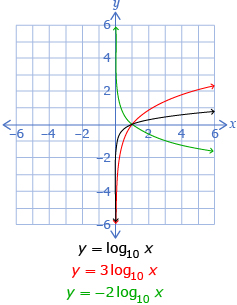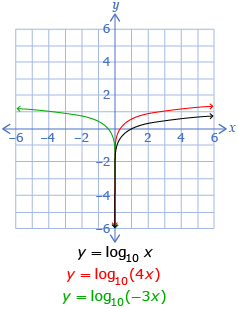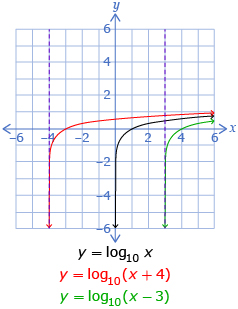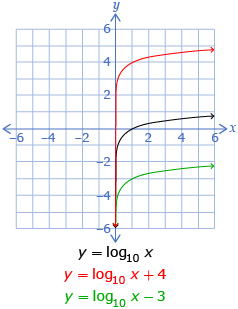In Try This 2 you may have found that the parameters a, b, h, and k change the graph of a logarithmic function in the form ![]() in the following ways.
in the following ways. ![]()
Parameter |
Transformation |
Example |
| a |
|
 |
| b |
|
 |
| h |
|
 |
| k |
|
 |
You may have also noticed in Try This 2 that the parameters h and b affect the domain:
- The h-value translates the domain left or right.
- If the b-value is negative, the graph is reflected in the y-axis, and so the domain is reflected.
The range is unchanged and is all real numbers.